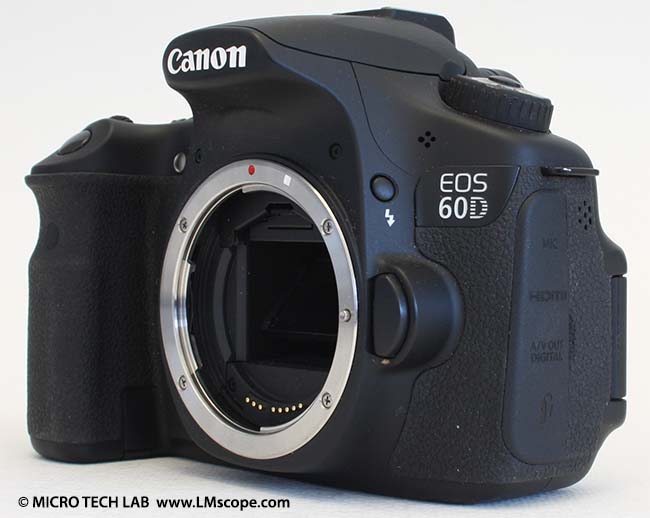

Differences between the two Canon ranges EOS 40D/50D/60D and EOS 600D/650D/700D
There are two different ranges in the Canon product portfolio: the entry-level range with the three-digit model numbers (EOS 600D/650D/700D) and the semi-professional range with the two-digit numbers (EOS 40D/50D/60D). In this article, we would like to briefly outline the most significant differences between the two.

To begin with, in order to avoid any misunderstandings, it must be pointed out that both ranges work very well for microscopy applications and at present are the most widely popular cameras for use on the microscope. The table below shows a brief comparison of the current top models in the two ranges.
| Canon EOS 700D | Canon EOS 60D | |
|---|---|---|
| Year of construction | 2013 | 2010 |
| Price (€) | 850 | ab 800 |
| Sensor | APS-C | APS-C |
| Megapixel | 18 MP | 18 MP |
| Color depth | 42 Bit | 42 Bit |
| Exposure time | 1/4,000 | 1/8,000 |
| Weight | 580 gr | 755 gr |
The first difference, which becomes apparent at second glance but can play an important part in such a sensitive field of application as microphotography, is the motor for the mirror and shutter. The lower-priced three-digit range has only one motor for the mirror and shutter, while the semi-professional range is equipped with two separate motors. Essentially, in the case of the higher-priced models, this means that when capturing an image in Live View mode, only the shutter is moved to control the exposure, and the mirror is always flipped up. The entry-level models, by contrast, bring the mirror down at the end of every exposure, in order to re-set the shutter for the next exposure. These mirror movements produce small vibrations that show up in the image as blurring. For this reason, it is advisable to pause for at least one or two seconds after every exposure.
This means that this effect can be very easily circumvented when taking individual pictures, but when taking a continuous series of images, the semi-professional models (40D/50D/60D) perform considerably better.
A second, very important difference is the exposure time. With the EOS 60D it is twice as fast as with the Canon EOS 700D.
A third point to take into account is the service life of the camera. Due to the two separate mirror and shutter motors, the wear and tear is certainly considerably less in the two-digit range of cameras. In normal operation, that difference won’t be particularly evident, but in the case of image stacking, where for one image up to 100 shots are taken, the mirror and shutter might be activated as often as 1,000 times or more every day.
22.07.2013